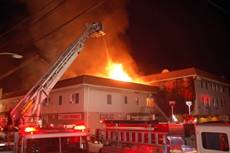
In today’s globalized world, it’s all too easy to imagine disaster striking at the heart of your business. Take a moment to mull over some of the scares we’ve had recently that could derail your business. Last year, Computer Weekly reported on the distinct chance that we could see a new flu pandemic. Global terrorism in the summer of 2016 targeted two-dozen different countries, including the US. Flooding destroyed thousands of homes and businesses in Louisiana. And wildfires are still ravaging parts of California.
With all these disasters or potential disaster hitting businesses in the US, what can they do to ensure continuity?
David Van Allen is the VP of operations at INetU. He’s an expert in disaster recovery and planning. But he has some rather unusual advice for businesses contemplating disaster. This is what he says:
Don’t Just Focus On the Technological Side of The Business
When we think about business continuity, we typically think about keeping IT systems up and running. But unless your business is entirely on the blockchain, it’s likely it still has some physical component. Van Allen reminds businesses that they need to think about what would happen if there was a non-technological problem. Sure, their businesses might operate over the cloud. But they still need office space for people to be able to do their work. If there was a fire, does the business have a fire damage restoration plan? What if workers all got ill, thanks to a pandemic? How would the business cope with only a skeleton crew? Van Allen recommends that businesses spend a few days thinking through disasters that could hit things other than their IT. He suggests starting simple and going from there.
Create a Scenario-Based Plan
Van Allen suggests businesses develop specific plans for the disasters that are most likely in their area. If you live in Hurricane Valley, consider the ways in which your company would defend itself against a tornado. If your site is next to a river that’s prone to flooding, think about how you’d react quickly to avoid significant losses.
Next Van Allen advises firms to segment their plans into two sections. They should have a list of things that need to be done immediately in the event of a disaster. And then they should have a separate list for all the other things that will be important later on.
Stick to the Checklist
When disaster strikes things can get chaotic very quickly. That’s why Van Allen swears by the use of a checklist. The checklist should log all the stages of the continuity operation to make sure no step gets missed out.
Communication with Employees
When disaster strikes, it’s essential to maintain communication with employees. Van Allen says that companies should designate special meeting areas where employees can congregate. The first thing to check is that everybody is safe, he says. The next is to secure technology and other valuables where possible. Finally, Van Allen recommends that companies invest in alternative forms of communication. Employees need to be able to stay in touch, even when the grid is down.






